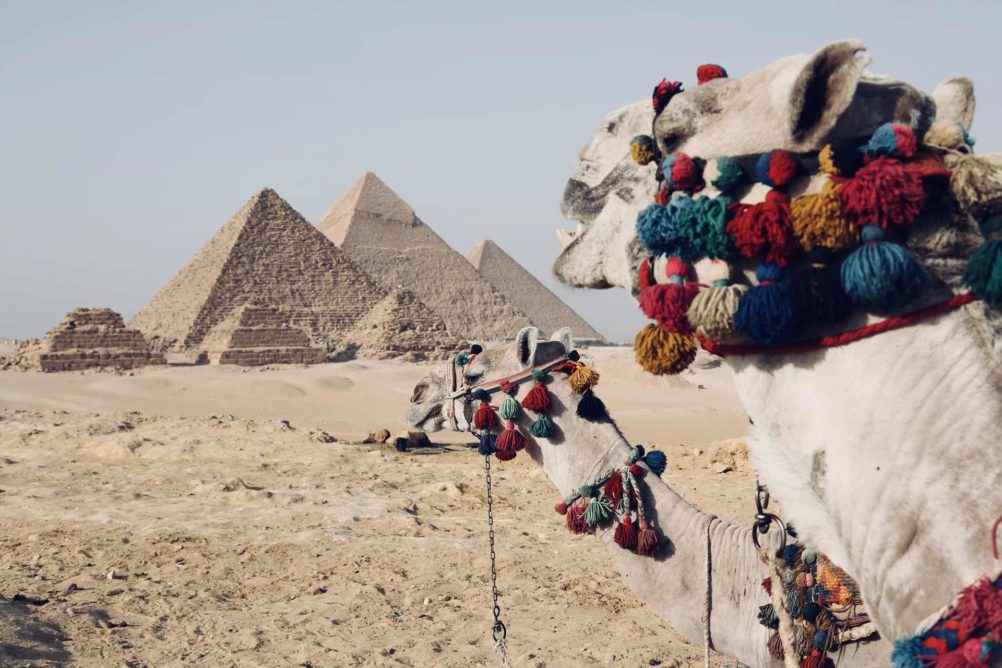Egypt small group tour: The best way to see Egypt’s top ancient attractions
Most teenagers were begging their parents to go to Disneyland. Me, I wanted to go to Egypt.
Words by Ute Junker
Photos by
Originally published in Traveller
For years I had been enchanted by images seen in books: those mysterious pyramids, the elaborate mummification rituals, the animal-headed gods, from Thoth with his ibis head to the crocodile grin of Set.
My parents, bless them, obliged, and that first trip to Egypt still remains one of the most memorable experiences in a lifetime of travelling. Decades on, I still have so many vivid memories of the trip: the incredible scale of the temple of Karnak, the surprisingly small tomb of Tutankhamen, the dazzling jumble of treasures in the Egyptian Museum.
All these years later, I have decided it’s time to return. I’ve put it off for years. For a while, Egypt’s tourism boom put me off; following the crowds has never been my thing. Then came the upheaval of the revolution, which made Egypt feel like a no-go zone.
Now, however, the time feels right to return. Revisiting these ancient monuments, I expect to be awed and inspired all over again – and I am. What I’m not expecting is to discover anything new. After all, I am going over old ground. Egypt, however, has some surprises in store for me.
Our itinerary takes in all the highlights, from the pyramids at Giza to the temples at Abu Simbel, but my personal journey of discovery starts in the city of Luxor. This is where the ancient Egyptian capital of Thebes once stood; no wonder, then, that the city is home to some of Egypt’s most impressive temples, including Luxor Temple and the mighty Karnak, an extraordinary complex that covers two square kilometres. No other building on earth has been so sacred for so long: every pharaoh for 1500 years added to this temple. The first stones were laid as Stonehenge was being completed; the last pharaoh to make additions to the complex was Alexander the Great’s brother-in-law.
I have very clear of memories of Karnak’s most striking features, including the extraordinary hypostyle hall, sprawling over 5000 square metres and dominated by 134 papyrus-topped columns that soar up to 20 metres in their air. Equally arresting is the Avenue of the Sphinxes which leads into the temple. I remember being awed by the two rows of sphinxes guarding the road; today I am awed when our guide, Hassan – whose also works as an archaeologist – tells us that his colleagues have discovered the rest of the avenue which linked Karnak with the temple of Luxor under a modern road. Excavations are underway; perhaps on my next trip, I’ll be able to see the whole three-kilometre avenue.
Luxor’s treasures pale in comparison with the treasures on the other shore of the Nile. On the eastern bank, the Egyptians built a city of the living; on the western bank, they erected their cities of the dead. This is where you find the magnificent tombs of the Valleys of the Kings and Queens, among the country’s top attractions.
While the treasures that once filled the tombs were famously stolen by tomb robbers, the tombs are still worth visiting for the intricate decorations executed in astoundingly vivid colours – glowing yellows, bright blues, gentle greens and rusty reds. These same colours once coated the temples, but have been scoured off by thousands of years of sun and wind.
The West Bank is also where you find the pharaohs magnificent mortuary temples. My teenage self was most intrigued by the mortuary temple of Queen Hatshepsut, the greatest of the female pharaohs. The decorations on the triple-terraced monument celebrate Hatshepsut’s famous expedition to Somaliland. The Somali expedition returned to Egypt bearing prized incense trees; incredibly, two survivors of that expedition can still be seen in front of the temple. They are looking twisted and desiccated but, at more than 3000 years old, the fact of their survival is astounding.
Carvings of the incense trees are still on the temple walls just as I remember them. The depictions of Somaliland also show villages filled with distinctive stilted round huts, flanked by coconut palms and accessed by ladders. Hassan draws our attention to the depiction of Somaliland grandees, particularly the Somali leader’s wife, a rather corpulent woman with hugely rounded hips, seated on a donkey. Hassan points to the accompanying hieroglyphics. The ancient Egyptians had a sense of humour, he reveals. “This inscription here sympathises with the donkey,” he tells us with a straight face.



